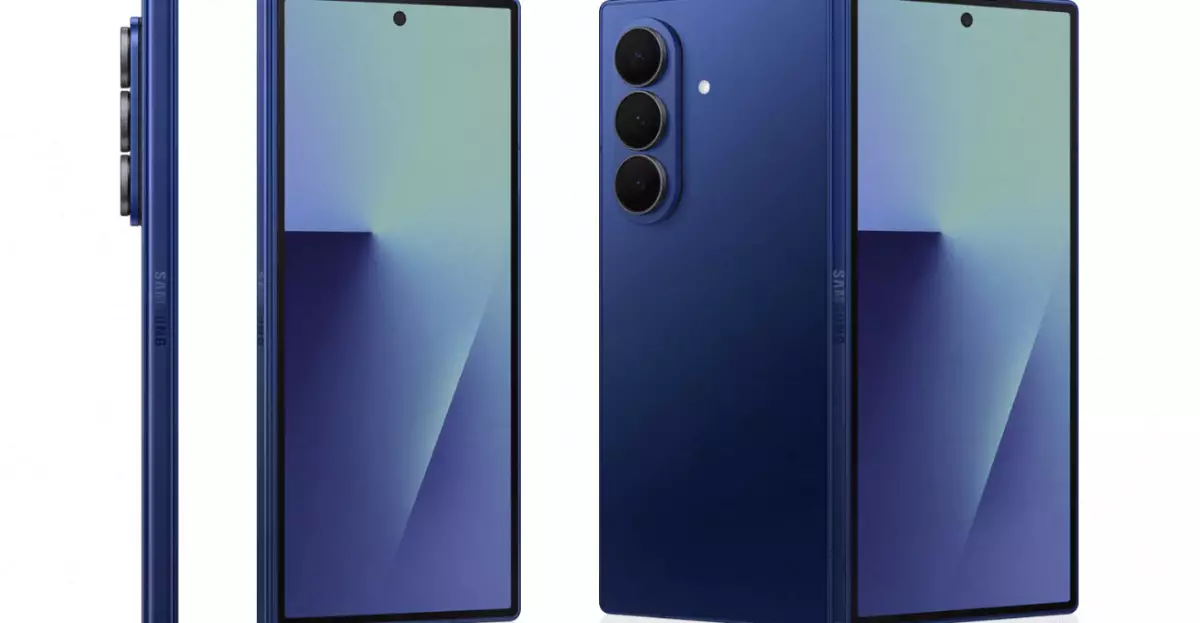Samsung has long been revered as the pioneer in folding smartphones, seamlessly blending innovation with user-centric design. However, recent leaks suggest a drastic shift in its strategy: the upcoming Galaxy Fold 7 may forego S Pen support altogether. This decision should not be dismissed lightly, as it signals both a departure from traditional product features and a potential reevaluation of what consumers truly desire in a premium foldable device. While some may see it as a pragmatic move aimed at slimmer design and increased convenience, others could interpret it as a retreat from a feature that defined the synergy between Samsung’s Note and foldable lines.
No longer supporting the S Pen on the Galaxy Fold 7 indicates a fundamental repositioning. For years, Samsung has successfully leveraged the S Pen as a hallmark feature, integrating it into multiple device families, especially within the Galaxy Note series. The pen’s absence on a device as pivotal as the Fold 7 could be perceived as a move toward simplification, but it also risks alienating loyal users who see stylus support as an essential aspect of productivity and creative expression. This decision raises questions about whether the manufacturer is prioritizing minimalism over functionality or responding to hardware limitations that come with ultra-slim profiles.
The Tech Behind the Trimmed Design
One of the key stories coming from these leaks revolves around the physical slimness of the Galaxy Fold 7. With an unfurled profile measuring just 4.2mm and weighing less than a large chocolate bar, Samsung seems committed to making a device that feels less bulky—more portable and ergonomic. Yet, delivering such an ultra-slim form factor inevitably introduces compromises. The removal of an S Pen slot or support could be one of them. The stylus typically requires a dedicated space or built-in storage, features that become increasingly challenging when you shrink the device’s size.
This trade-off underscores a broader industry tension: Should device makers focus on creating the thinnest, most pocket-friendly devices at the expense of features that appeal primarily to power users? What Samsung seems to be implying is that, for this generation of the Fold, consumer demand for an increasingly sleek profile outweighs the utility of stylus support. If so, are we moving toward a future where foldables are primarily consumption devices rather than multi-functional tools?
Implications for the Future of Foldables
Samsung’s apparent shift signals a recalibration of the foldable paradigm. The company might be betting that mainstream consumers prioritize portability and simplicity over the productivity perks that a stylus enables. This could be an acknowledgment that the foldable market is maturing, and users are increasingly seeking devices that blend the convenience of smartphones with the portability of tablets, rather than devices optimized explicitly for note-taking or artistic endeavors.
However, removing S Pen support could also be a tactical move to streamline manufacturing, reduce costs, or even push users toward the upcoming Galaxy Note or S series instead. If true, this strategy might fragment Samsung’s product lineup further, forcing consumers to pick and choose devices based on their stylus needs rather than consolidating features into a single device.
Furthermore, the shifting focus toward ultra-slim profiles and lightweight designs, as seen with the Watch Ultra’s enhancements, suggests Samsung is prioritizing sleek aesthetics and portability. But at what cost? Users who rely on the S Pen for detailed work or note-taking might feel underserved, which could impact loyalty and perception of Samsung as a versatile innovator.
What Does This Mean for Consumers?
For enthusiasts and loyal advocates, the news is bittersweet. On one hand, a thinner, lighter Galaxy Fold sounds appealing for everyday portability. On the other, the absence of S Pen support challenges the multifunctionality that has set Samsung apart. It’s a stark reminder that even industry leaders are making tough choices, often balancing innovation with limitations imposed by form factors.
Potential buyers should approach these leaks with healthy skepticism. Hardware details often evolve up to the product launch, and features promised in early leaks may change. Still, this move underscores that Samsung isn’t afraid to experiment with its flagship concepts—sometimes redefining what “must-have” features are in a modern smartphone.
In the end, the Galaxy Fold 7’s direction could reflect a broader trend across the tech industry: the relentless pursuit of minimalism and portability sometimes at the expense of versatility. If Samsung’s gamble pays off, it might usher in a new era of sleek, powerful foldables—though at what cost to those who cherish the legacy of stylus-based productivity remains to be seen.

